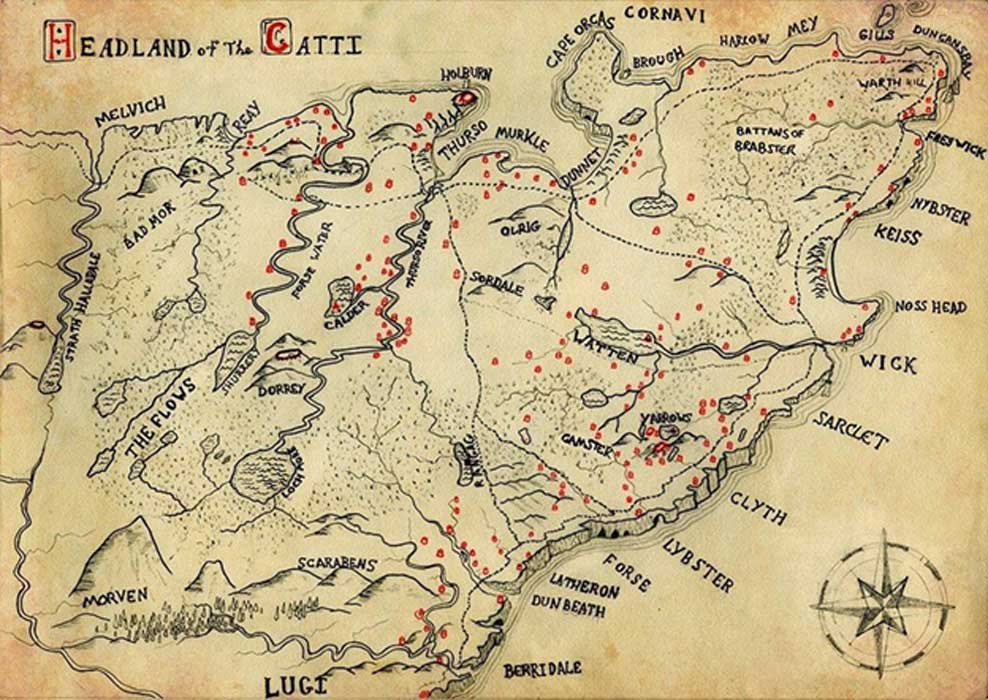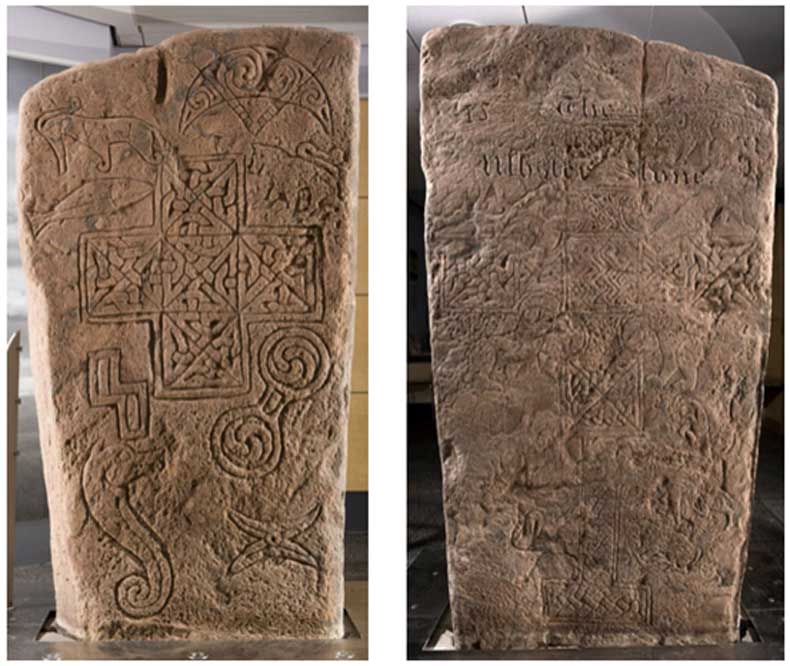
Botanical Mystery of the Ancient Ulbster Stone
A 1,500-year-old carved marvel, the Ulbster Stone, was unearthed from the grounds of an ancient Celtic chapel in the remote Highlands of Scotland and is renown to have more symbols than any other Pictish monument. Severely faded and almost lost midst a dreamlike arrangement of curiously carved imagery, is a unique symbol that has been categorized by archeologists as a flower. Several archeologists may dispute this, proposing that this symbol actually represents three psilocybin mushrooms, better known as magic mushrooms, suggesting the early Celt’s in Scotland might have been much closer to Mother Nature or heaven than is currently thought.

The Ulbster Stone, partially incised and partially in relief. (Reproduced courtesy of Caithness Horizons Museum and Art Gallery, Thurso)
The county of Caithness is located on the north east coast of Scotland and has been inhabited since about 8000 BC, when hunter gatherers paddled northwards up the fish-rich, post-Ice Age, rivers and costal firths. The first farmers evolved around 4000 BC and by the 6th century AD Pictish farmers welcomed the first Celtic Christian missionaries with their Goidelic, or Gaelic, languages. By cleverly aligning with the powerful Pictish rulers of the north, the Celtic missionaries did not aim to overthrow Pictish beliefs, symbology and traditions, but over time they demonstrated that just beyond the Pictish pantheon of gods, was an omnipotent One God, who ruled all creation. The semi-integrated Pictish-Christian culture of Caithness was brought to a bloody end by Viking raiders in the 9th and 10th centuries who came to dominate Caithness until the arrival of Norman knights in the 12th century.





